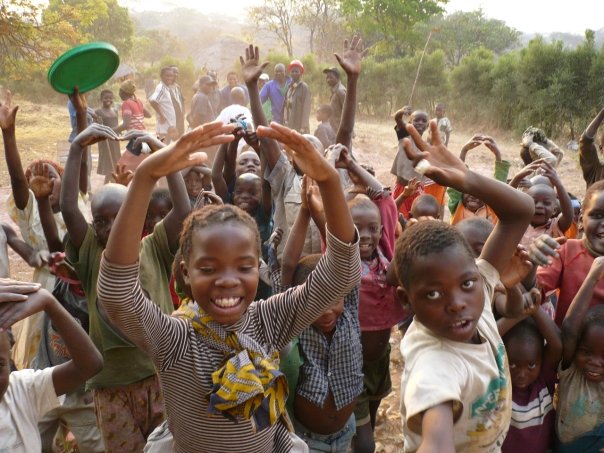People here build their houses out of locally available materials. They use clay to mold bricks for the walls and thatch the roof with grass. The bricks are fired on the more permanent homes but some people (mostly those who live in fishing villages for part of the year and cultivate in another place the rest of the year) build their houses out of unfired bricks, wooden poles, or just thick grasses because of their frequent movements. Wood isn't used very much in building because there are so many termites. Every house has a separate insaka, or cooking hut, where the meals are prepared and visitors entertained. Typical house is probably around 20'x20' in Luapula which is a bit bigger than homes I have seen in other provinces. There are usually eight or ten people in a typical household. My house is a typical village house with the exception of it's cement floor. Cement is too expensive for most families and so most houses have smeared clay over packed bricks for a floor.
Here is a photo of my house and insaka:

What is done on a typical day is dependent on one's sex and age. If a woman, the day will be filled largely with domestic tasks and supervising children (though the children often seem to be supervising themselves). During the rainy season (oct. through april) this expands to include some cultivation and weeding of fields. Men are responsible for preparing agricultural fields, building houses, and providing things like clothes, school supplies, and perhaps a small amount of disposable income. Children go to school and help their moms with the household tasks. Young girls draw a lot of water for their mothers and help with the jobs they will someday be responsible for while young boys spend their time trying to kill birds with their sling shots and fishing in the river.

No comments:
Post a Comment